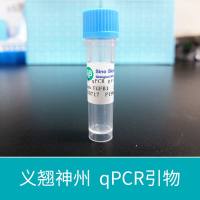Gene Arrays and Proteomics: A Primer
互联网
互联网
相关产品推荐

COMMD5/COMMD5蛋白Recombinant Human COMM domain-containing protein 5 (COMMD5)重组蛋白Hypertension-related calcium-regulated gene protein;HCaRG蛋白
¥1836

miRNA靶基因PCR芯片(miRNA Target PCR Arrays)
询价

mouse CXCL1 qPCR primer pairs
¥399

BCL11B/BCL11B蛋白Recombinant Human B-cell lymphoma/leukemia 11B (BCL11B)重组蛋白B-cell CLL/lymphoma 11B (COUP-TF-interacting protein 2) (Radiation-induced tumor suppressor gene 1 protein) (hRit1) (BCL-11B) (CTIP2) (RIT1)蛋白
¥2328

///蛋白Recombinant Escherichia phage T7 DNA helicase/primase重组蛋白Gene product 4 (Gp4)蛋白
¥2328
相关问答

